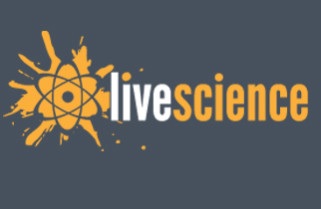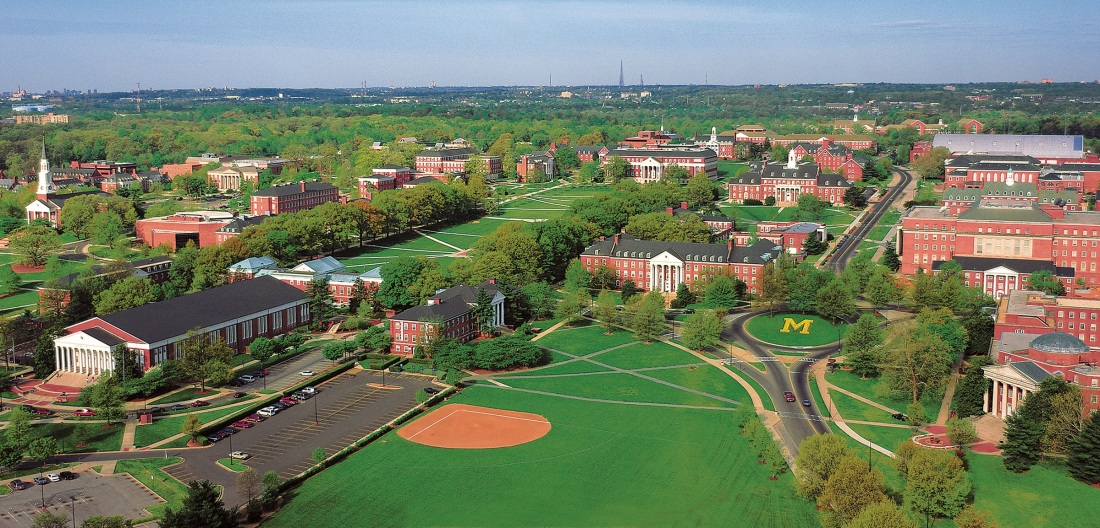via
1.21.21
Meghan Bartels
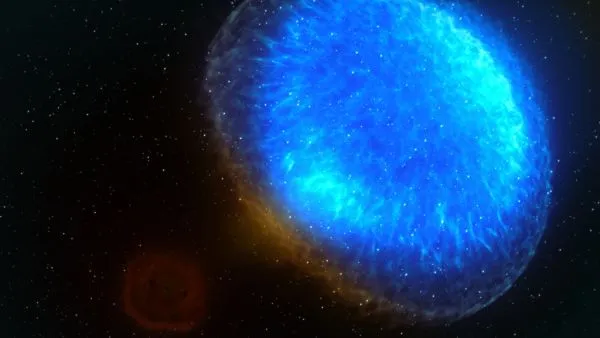
An artist’s depiction of X-ray emissions forming the last afterglow of the high-energy jets produced by a neutron-star collision. © NASA’s Goddard Space Flight Center/CI Lab.
Three years ago, two neutron stars collided in a cataclysmic crash, the first such merger ever observed directly. Naturally, scientists kept their eye on it — and now, something strange is happening.
Astrophysicists observed the star collision on Aug. 17, 2017, spotting for the first time ever signs of the same event in both a gravitational-wave chirp detected by the Laser Interferometer Gravitational-Wave Observatory (LIGO) on Earth and a massive burst of different flavors of light.

The X-rays observed at the location 130 million light-years from Earth peaked less than six months after the merger’s discovery, then began to fade. But in observations gathered this year, that trend has stopped, and an X-ray signal is unexpectedly lingering, according to research presented on Thursday (Jan. 14) at the 237th meeting of the American Astronomical Society, held virtually due to the pandemic.
“Our models so far were describing the observation incredibly well, so we thought we nailed it down,” Eleonora Troja, an astrophysicist at the University of Maryland and NASA’s Goddard Space Flight Center in Maryland, told Space.com. “I think everybody was convinced that this thing was going to fade quickly, and the last observation showed that it is not.”
A star crash checkup … and mystery
When NASA’s Chandra X-ray Observatory checked in on the former merger in the spring, things were beginning to look fishy.
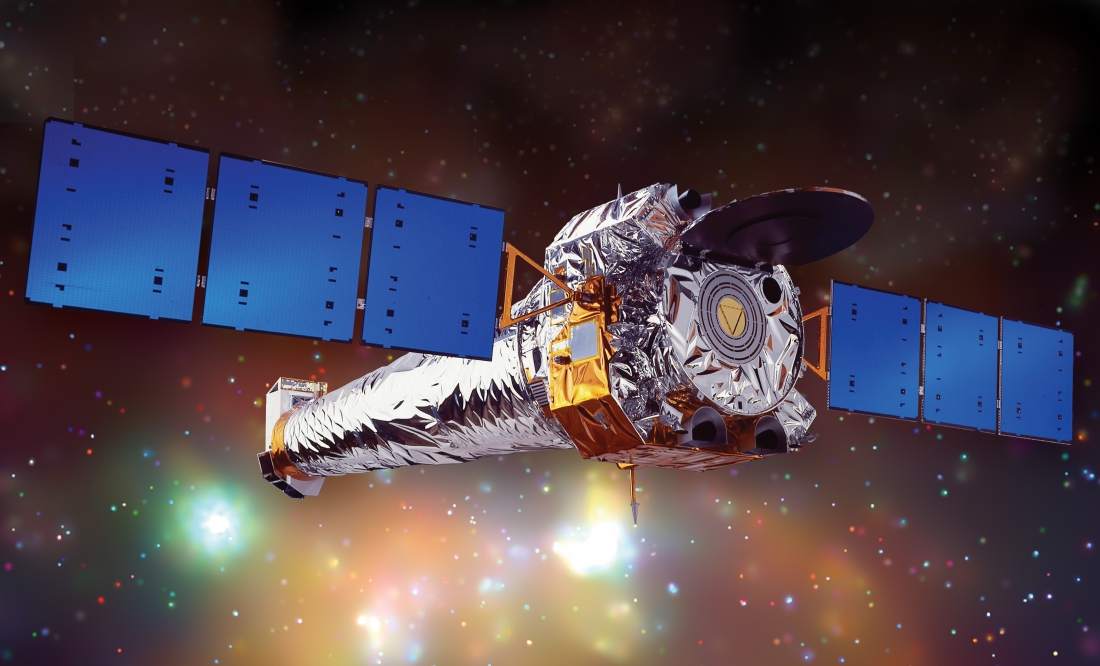
Scientists thought they were looking at the afterglow of the high-energy jet of material shot out by the collision, and they had expected the X-rays to have faded by the spring. But the source was still glowing in the spacecraft’s view. When the telescope looked again, in December, it still found a bright X-ray signal.
It’s too early to know what precisely is happening, Troja said. Chandra may not look again until this December, although she plans to ask for the telescope to change plans to check in sooner. Radio instruments can study the collision more frequently, and could help solve the puzzle between now and then.
For now, Troja believes one of two hypotheses will explain the continued X-ray emissions.
In one scenario, the lingering X-rays are joined by radio light within the next eight months or year. Troja said that would suggest that scientists are seeing not the afterglow of jets shooting out from the collision, but the afterglow of the massive kilonova explosion itself — something scientists have never seen before.
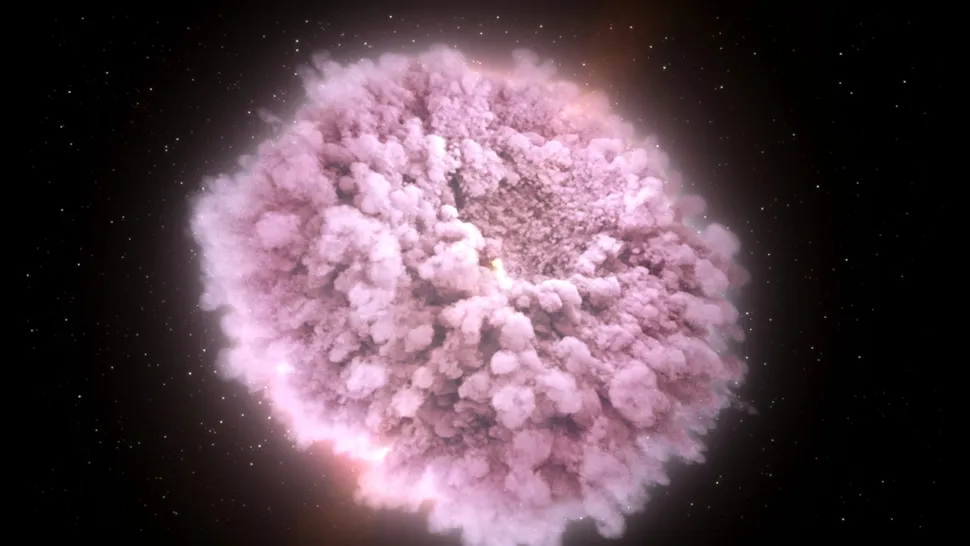
An artist’s depiction of a cloud of debris created by a neutron-star collision. Credit: NASA’s Goddard Space Flight Center/CI Lab.
“People think that in the 21st century we have seen it all and there is no first time left,” she said. Not so if this hypothesis holds. “This would be a first, it would be a new type of light, a new form of astrophysical source that we have never seen before.”
If the X-ray emissions continue but no radio emissions join them, Troja thinks scientists may be looking at something perhaps still more intriguing: proof that the collision formed a massive neutron star, the most massive such object known to date.
Soon after the collision, scientists calculated the mass of the initial neutron stars and the mass of what was left, after the dramatics shot matter out into space. But that value is between the current largest known neutron star and the smallest known black hole, leaving scientists stumped. The new observations could decide it: If the object is emitting X-rays, it sure isn’t a black hole. Confirming the result of the collision would give scientists an opportunity to better understand how matter behaves in superdense neutron stars, she said.
“We have a beautiful problem,” Troja said. “No matter what the solution is, it’s going to be exciting, which is a great problem to have in astrophysics.”
See the full article here .
five-ways-keep-your-child-safe-school-shootings
Please help promote STEM in your local schools.
Driven by the pursuit of excellence, the University of Maryland has enjoyed a remarkable rise in accomplishment and reputation over the past two decades. By any measure, Maryland is now one of the nation’s preeminent public research universities and on a path to become one of the world’s best. To fulfill this promise, we must capitalize on our momentum, fully exploit our competitive advantages, and pursue ambitious goals with great discipline and entrepreneurial spirit. This promise is within reach. This strategic plan is our working agenda.
The plan is comprehensive, bold, and action oriented. It sets forth a vision of the University as an institution unmatched in its capacity to attract talent, address the most important issues of our time, and produce the leaders of tomorrow. The plan will guide the investment of our human and material resources as we strengthen our undergraduate and graduate programs and expand research, outreach and partnerships, become a truly international center, and enhance our surrounding community.
Our success will benefit Maryland in the near and long term, strengthen the State’s competitive capacity in a challenging and changing environment and enrich the economic, social and cultural life of the region. We will be a catalyst for progress, the State’s most valuable asset, and an indispensable contributor to the nation’s well-being. Achieving the goals of Transforming Maryland requires broad-based and sustained support from our extended community. We ask our stakeholders to join with us to make the University an institution of world-class quality with world-wide reach and unparalleled impact as it serves the people and the state of Maryland.

